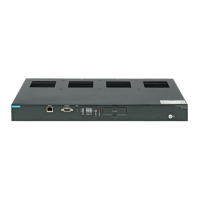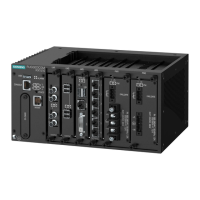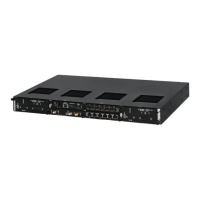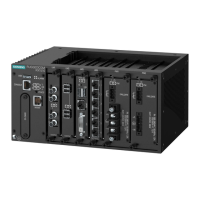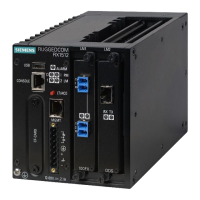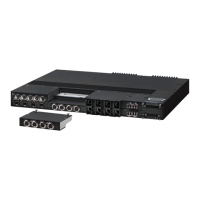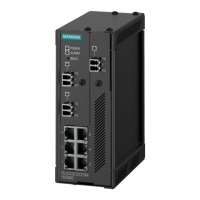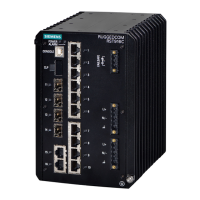Chapter 5
Setup and Configuration
RUGGEDCOM ROX II
User Guide
678 Viewing Routing Rules
Figure 796: Routing Rules Summary Table
This table provides the following information:
Parameter Description
Rule ID Defines the order in which rules are matched on each ingress packet. The first matched rule
is applied on the packet.
Rule Type Synopsis: multicast, unicast, invalid, hidden
Identifies the type of the rule: unicast,multicast,invalid.
In VLAN Identifies the ingress VLAN. To match the rule, the packet's ingress VLAN must match the
number.
Out VLAN(s) Synopsis: "out-vlans" occurs in an array of at most 255 elements
Identifies the egress VLAN. The matched multicast packet is sent to the identified VLAN.
Protocol The IP Encapsulated Protocol number. Unless zero is specified, the incoming packet's IP
protocol must match this number.
source Synopsis: The ipv4-address type represents an IPv4 address in dotted-quad notation. The
IPv4 address may include a zone index, separated by a % sign. The zone index is used to
disambiguate identical address values. For link-local addresses, the zone index will typically
be the interface index number or the name of an interface. If the zone index is not present,
the default zone of the device will be used. The canonical format for the zone index is the
numerical format, The ipv4-prefix type represents an IPv4 address prefix. The prefix length
is given by the number following the slash character and must be less than or equal to 32.
A prefix length value of n corresponds to an IP address mask that has n contiguous 1-bits
from the most significant bit (MSB) and all other bits set to 0. The canonical format of an
IPv4 prefix has all bits of the IPv4 address set to zero that are not part of the IPv4 prefix.,
any
Identifies the source IP address or subnet. To match the rule, the incoming packet's source
IP address must belong to the subnet.
Source Port The port associated with the source flow. A value of 0 means Not Applicable.
destination Synopsis: The ipv4-address type represents an IPv4 address in dotted-quad notation. The
IPv4 address may include a zone index, separated by a % sign. The zone index is used to
disambiguate identical address values. For link-local addresses, the zone index will typically
be the interface index number or the name of an interface. If the zone index is not present,
the default zone of the device will be used. The canonical format for the zone index is the
numerical format, The ipv4-prefix type represents an IPv4 address prefix. The prefix length
is given by the number following the slash character and must be less than or equal to 32.
A prefix length value of n corresponds to an IP address mask that has n contiguous 1-bits
from the most significant bit (MSB) and all other bits set to 0. The canonical format of an
IPv4 prefix has all bits of the IPv4 address set to zero that are not part of the IPv4 prefix.,
any
Defines the destination IP address or subnet. To match the rule, the incoming packet's
destination IP address must belong to the subnet.
Destination Port The port associated with the destination flow. A value of 0 means Not Applicable.
gateway Synopsis: The ipv4-address type represents an IPv4 address in dotted-quad notation. The
IPv4 address may include a zone index, separated by a % sign. The zone index is used to
disambiguate identical address values. For link-local addresses, the zone index will typically
be the interface index number or the name of an interface. If the zone index is not present,
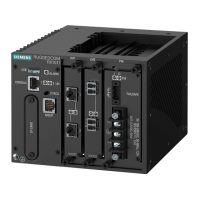
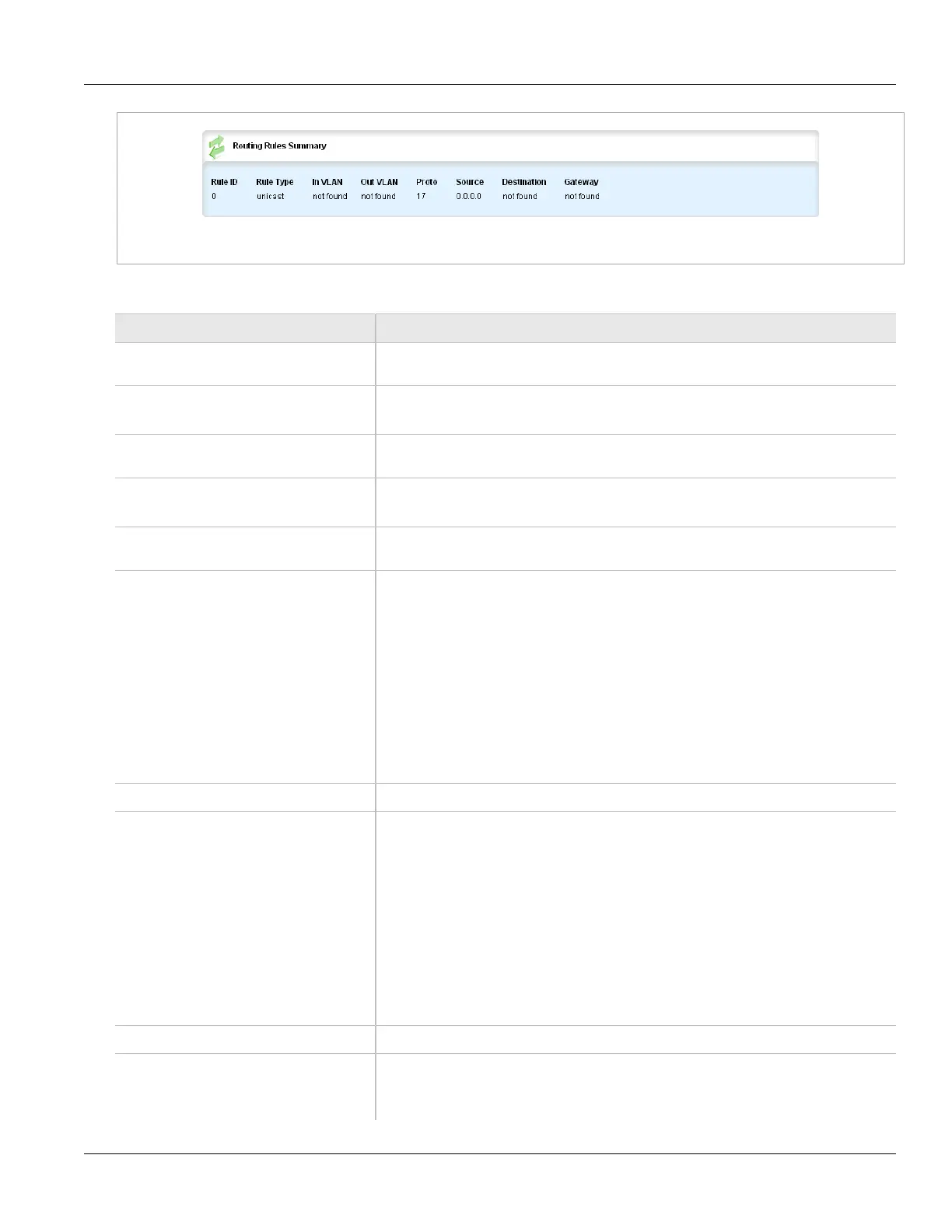